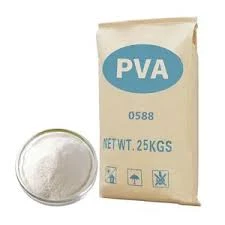The Role of Hydroxypropyl Methylcellulose (HPMC) in Various Applications
Hydroxypropyl methylcellulose (HPMC) is a versatile cellulose derivative that has gained significant attention in various industries, including pharmaceuticals, food, construction, and cosmetics. This semi-synthetic polymer possesses unique physical and chemical properties that make it an essential ingredient in many formulations.
Chemical Composition and Properties
HPMC is derived from cellulose through a series of chemical reactions, wherein hydroxypropyl and methyl groups are introduced. The degree of substitution of these groups can be manipulated to alter the viscosity, solubility, and gel-forming capabilities of HPMC, allowing for tailored applications. Typically, HPMC is a white, odorless powder that is soluble in water and forms a clear, viscous solution when hydrated. Its non-toxic nature and compatibility with various ingredients further enhance its appeal across multiple sectors.
Pharmaceutical Applications
In the pharmaceutical industry, HPMC serves as an excipient in tablet formulations, where it acts as a binder, film-former, and controlled-release agent. Its ability to form hydrophilic gels makes it an excellent choice for sustained-release drug delivery systems, ensuring that medications are released slowly over time, which can enhance therapeutic efficacy and patient compliance. Additionally, HPMC is often used in ophthalmic preparations due to its lubricating properties and capacity to maintain moisture on the ocular surface.
Food Industry Utilization
meilose hydroxypropyl methyl cellulose(hpmc)

HPMC is also widely used as a food additive, classified as a thickening agent, emulsifier, and stabilizer. It can enhance the texture and appearance of various food products, such as sauces, baked goods, and dairy items. Furthermore, HPMC is favored in gluten-free formulations, where it helps to improve the structural integrity and mouthfeel of gluten-free products, making them more appealing to consumers. Its multifunctional nature not only improves food quality but also extends shelf life by preventing moisture loss.
Construction and Building Materials
In the construction industry, HPMC is utilized in various building materials, including adhesives, plasters, and mortars. Its water-retention properties are crucial for maintaining the workability of cement-based products, ensuring that they remain malleable during application. HPMC helps improve adhesion and flexibility while reducing cracking in dried materials. Such characteristics lead to enhanced performance and longevity of construction projects.
Cosmetic Formulations
The cosmetic industry also benefits from the application of HPMC. It is commonly used as a thickener, emulsifier, and film-forming agent in lotions, creams, and other personal care products. Its ability to stabilize emulsions and improve the overall texture of formulations makes it a preferred ingredient for manufacturers looking to deliver high-quality products.
Conclusion
Hydroxypropyl methylcellulose is an incredibly versatile ingredient that plays a vital role in various industries. Its unique properties allow for a wide range of applications, from pharmaceuticals and food products to construction materials and cosmetics. As research continues to uncover new possibilities for HPMC, its significance is likely to grow, further reinforcing its position as a crucial component in modern formulations. With increasing consumer demand for effective and high-quality products, HPMC will undoubtedly remain at the forefront of innovative solutions across multiple sectors.




